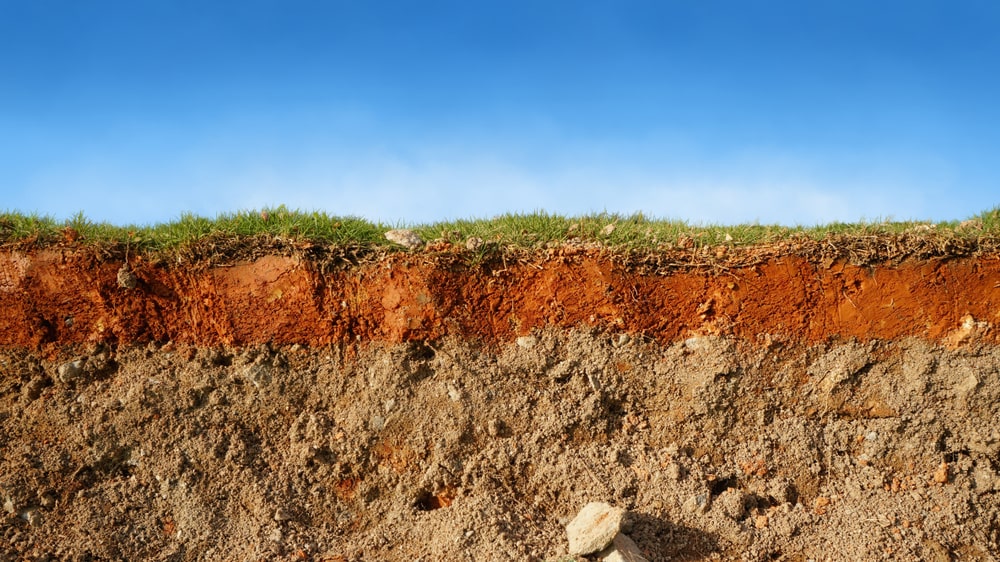DO I AMEND MY CLAY SOIL WHEN I PLANT THIS FALL?
PLANTING IT RIGHT
So, do I add compost matter to my soil when I plant or not? I am confused because I hear both sides as to why or why not to add amendments to the soil. Both sides of this issue seem convincing.
First, before I get into this topic of amending or not amending, let me say that I, personally, believe in amending the soil with compost when planting all new shrubs and trees. I have worked with way too many homeowners whose plants have died because of being planted into heavy clay soil that does not perk or drain.
I am finding writing this blog to be a little difficult because so many of my colleagues would disagree with me on amending the soil.
If you are not sure how well your soil perks then try this experiment. Dig a hole and fill it up with water. See how long it takes the water to eventually perk. Some customers have stated it had taken hours. What does this experiment prove? To me, it proves that the heavy clay soil needs to be amended with some good organic matter in order to help improve the drainage so that the newly planted shrubs and trees don’t develop rotting roots and die.
So, let’s get clear as to understanding clay soil. First, don’t get me wrong. Clay soil is good in that it holds a lot of nutrients that plants will benefit from. In general, most of us in the Central Virginia area have clay soil. But, clay soil, to me, still needs to be amended with compost or organic matter. Here is why:
HINDER ROOT GROWTH
In addition to poor drainage, heavy clay soil will also hinder root growth. It’s not uncommon for plants growing in heavy clay soil to never grow outside of the hole they were planted into and the plant not thriving. Plus, from a watering standpoint, the roots will not grow adequately or extensively and the plant may require more frequent watering.
HARD TO WORK
We may all know that clay when wet becomes a sloppy mess and when it dries it becomes very hard like concrete.
LACKING BENEFICIAL BACTERIA
Heavy clay soil will lack healthy soil bacteria, microorganisms, and worms—the things that help plants to grow and thrive. Having earthworms is a good sign that you have healthy soil.
Let’s get back to adding soil amendments to the heavy clay soil. I don’t recommend adding sand to the clay soil as the only amendment. CLAY + SAND = CONCRETE. And, I don’t suggest using peat moss either. The nature of peat moss is to hold water and you are trying to improve drainage with the amendments. Leaf compost, humus, and homemade compost are what I suggest as amendments. And blend the chosen amendments to the existing clay soil until you have a nice, workable soil. KEEP IN MIND THAT YOU DON’T WANT TO DISCARD THE CLAY. YOU DON’T WANT ALL “FOREIGN” SOIL. Remember, clay has some good attributes. These attributes include moisture retention, clay is rich in a variety of minerals and nutrients, and clay soil provides a density that enables plants to stand stronger.
Hopefully, I have made a convincing argument for the need to amend our clay soil when planting. Remember—FALL IS FOR PLANTING—It’s the best season of all for planting. Here are just a few tips to keep in mind when planting this fall:
- For shrubs and trees, the planting hole should be dug two to four times wider, but no deeper than the root ball to be planted.
- Have the root ball slightly mounded out of the hole.
- If the plant is balled and burlapped – after the shrub or tree is placed in the hole at the proper depth, the burlap can be loosened from around the trunk of the plant. Also, be sure to remove all twine that may be wrapped around the trunk.
- For trees, the root flare should be level or slightly elevated with the edge of the planting hole. Trees and shrubs planted too deep are a common cause of early death.
- With container grown plants, the root ball should be moist, but not too wet at the time of planting.
- Never set the plant too deep in the hole. Here is an old saying “plant it high it won’t die/plant it low it will not grow.”
- We recommend adding ESPOMA BIO-TONE inside the planting hole at the time of planting. Bio-Tone is a root stimulator.
PLANT A LITTLE HAPPINESS !!!!!!!!!!!!!

